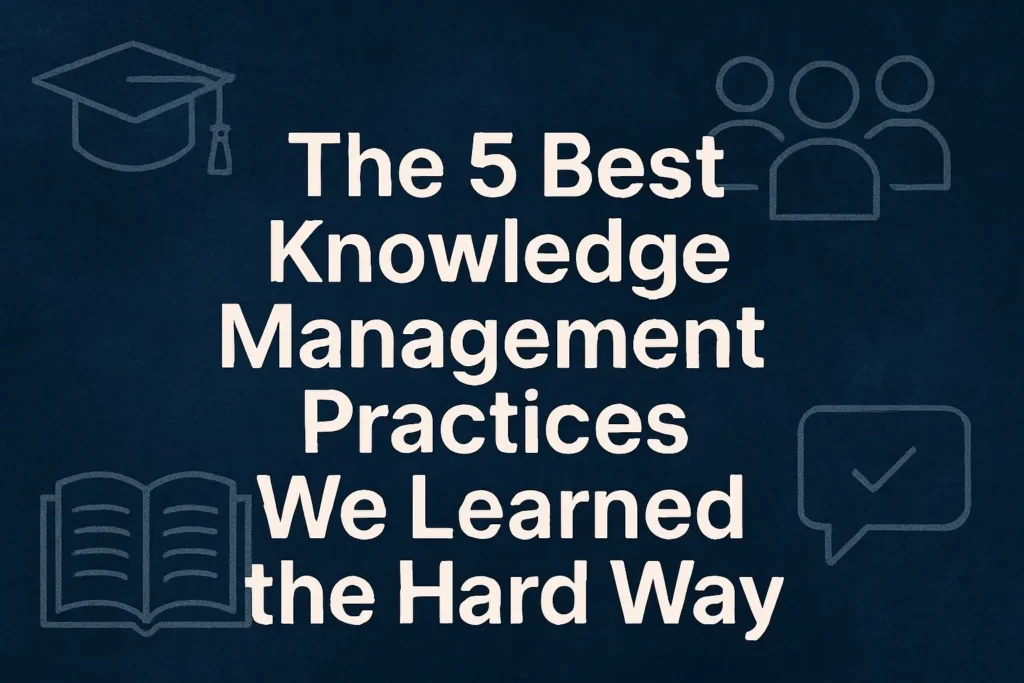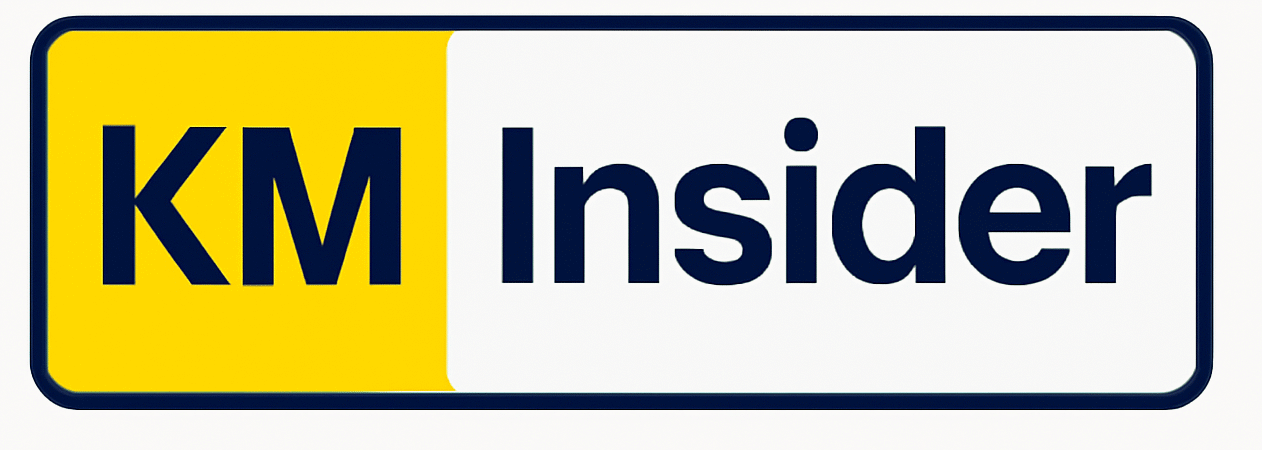We didn’t set out to become experts in knowledge management. Like most teams, we just wanted to stop answering the same questions over and over again, avoid costly mistakes, and keep work flowing smoothly when someone went on vacation or left the company.
But here’s the truth: Knowledge management (KM) sounds simple—write things down, organize them, make them accessible—but in practice, it’s anything but. Along the way, we made all the classic mistakes: too many tools, no clear ownership, stale documentation, and more. It took years of trial, error, and some painful missteps to finally land on practices that actually worked.
So in the spirit of saving you some trouble, here are the five best KM practices we learned the hard way—the ones that truly made a difference for our team and our business.

1. Design KM Around People, Not Tools
Most teams start by asking, “What tool should we use for knowledge management?” That’s the wrong question.
We’ve tried them all—wikis, shared drives, intranets, fancy AI-powered platforms and we’ve learned that tools alone don’t solve KM problems. People do. The right practice is to start with behaviors, not technology.
Ask yourself:
- How do people share knowledge today?
- Where does knowledge usually get lost?
- What motivates someone to write something down or look something up?
When we finally took time to observe our team’s habits, we realized we were trying to force tools that didn’t match how people actually worked. For example, we had engineers avoiding our wiki because it felt like a graveyard of outdated info. Meanwhile, they were sharing gold in Slack threads that disappeared by the next day.
So, we shifted our approach. We picked tools that aligned with where our people were already working—and then slowly introduced better habits on top of that. It wasn’t overnight, but it stuck.
2. Assign Ownership—Because Knowledge Without Accountability Dies
One of the biggest mistakes we made was assuming that “everyone” would help keep knowledge up to date. As it turns out, when something is everyone’s responsibility, it becomes no one’s job.
That’s when we introduced clear knowledge ownership.
For every major process, system, or area of work, we assigned an “owner”—someone responsible for keeping the documentation accurate and answering related questions. It didn’t mean they had to do everything themselves, but they were the go-to person.
This one change transformed our system from a static archive to a living knowledge base. Suddenly, there was accountability. People knew who to talk to. Owners took pride in keeping things relevant.
We even built this into our onboarding—new hires would meet the KM owners in different departments, so they knew who to turn to (and who to help) from day one.
3. Make KM a Daily Habit, Not a Quarterly Cleanup
At first, we treated knowledge management like spring cleaning—something we’d do every few months when things got messy. That was a mistake.
Knowledge management works best when it’s baked into daily workflows. It should be part of how work gets done, not an afterthought.
Here’s what helped us make KM a habit:
- Create templates for recurring projects or decisions so people naturally document as they go.
- End meetings with notes or action items that get stored in the knowledge base—immediately.
- Set “doc days” or KM hours where teams spend time updating or reviewing documentation, just like they would for code reviews.
- Celebrate contributions, even small ones. A “thanks for documenting that!” message can go a long way.
Over time, this turned knowledge-sharing into a normal, almost invisible part of our culture.
4. Keep It Simple—or No One Will Use It
One of our earliest failures was overcomplicating our knowledge systems. We had categories, subcategories, nested pages, tags, labels—you name it. It was tidy in theory, but impossible to navigate in practice.
The result? People didn’t even try to find information. They’d just ask someone instead.
Eventually, we adopted a new rule: If you need a map to find knowledge, it’s too complex.
We stripped things down:
- Flat structure over nested folders.
- Plain language over corporate jargon.
- Short pages over long walls of text.
- “Last updated” dates on every page.
We also added a simple search-first culture—encouraging people to search before you ask, and making sure the search feature actually worked.
It made a world of difference.
5. Review and Refresh—Because Knowledge Has an Expiration Date
Even the best knowledge becomes outdated. Roles change, tools evolve, and what worked six months ago might not be relevant today.
We used to assume that once something was documented, it was “done.” That mindset created a false sense of security. People relied on old info and made mistakes because of it.
Now, we treat knowledge like a living product—it needs maintenance.
Here’s what worked for us:
- Scheduled reviews every 3–6 months for core content.
- “Stale” warnings on pages not updated in over X months.
- Quick feedback forms so readers can flag outdated or unclear info.
- Sunsetting irrelevant content rather than letting it sit forever.
We also empowered team members to make small edits without going through a lengthy approval chain. That helped keep things fresh without bottlenecks.
Final Thoughts: It’s a Journey, Not a Project
If there’s one thing we’ve learned about knowledge management, it’s that it’s never really “done.” It’s not a project with a finish line—it’s an ongoing practice that evolves with your team.
The good news? You don’t need to get everything perfect from day one. Start small. Pick one or two of the practices above and begin there. Focus on your team’s real needs, make things easy, and treat knowledge like the asset it is.
We’ve made a lot of mistakes along the way—but each one taught us something valuable. Hopefully, these lessons can save you some time, frustration, and miscommunication.
And if nothing else, remember this: Knowledge only matters if people can use it when they need it.
